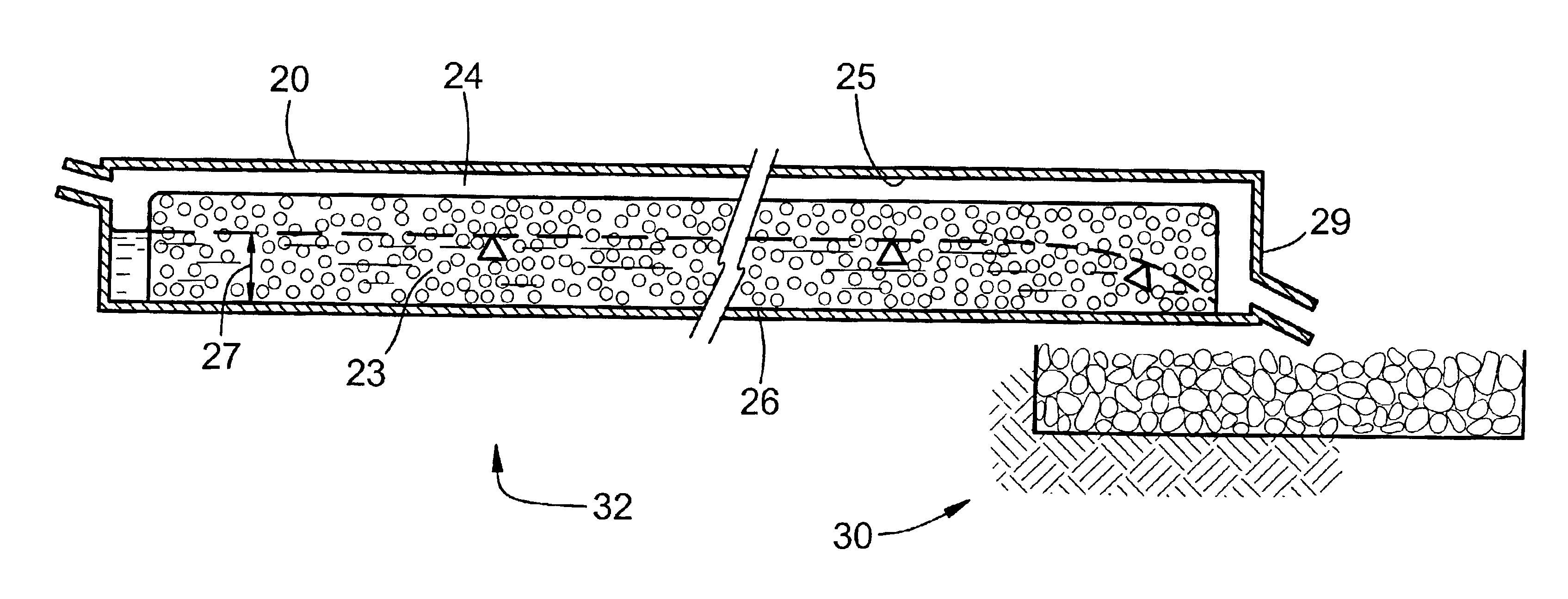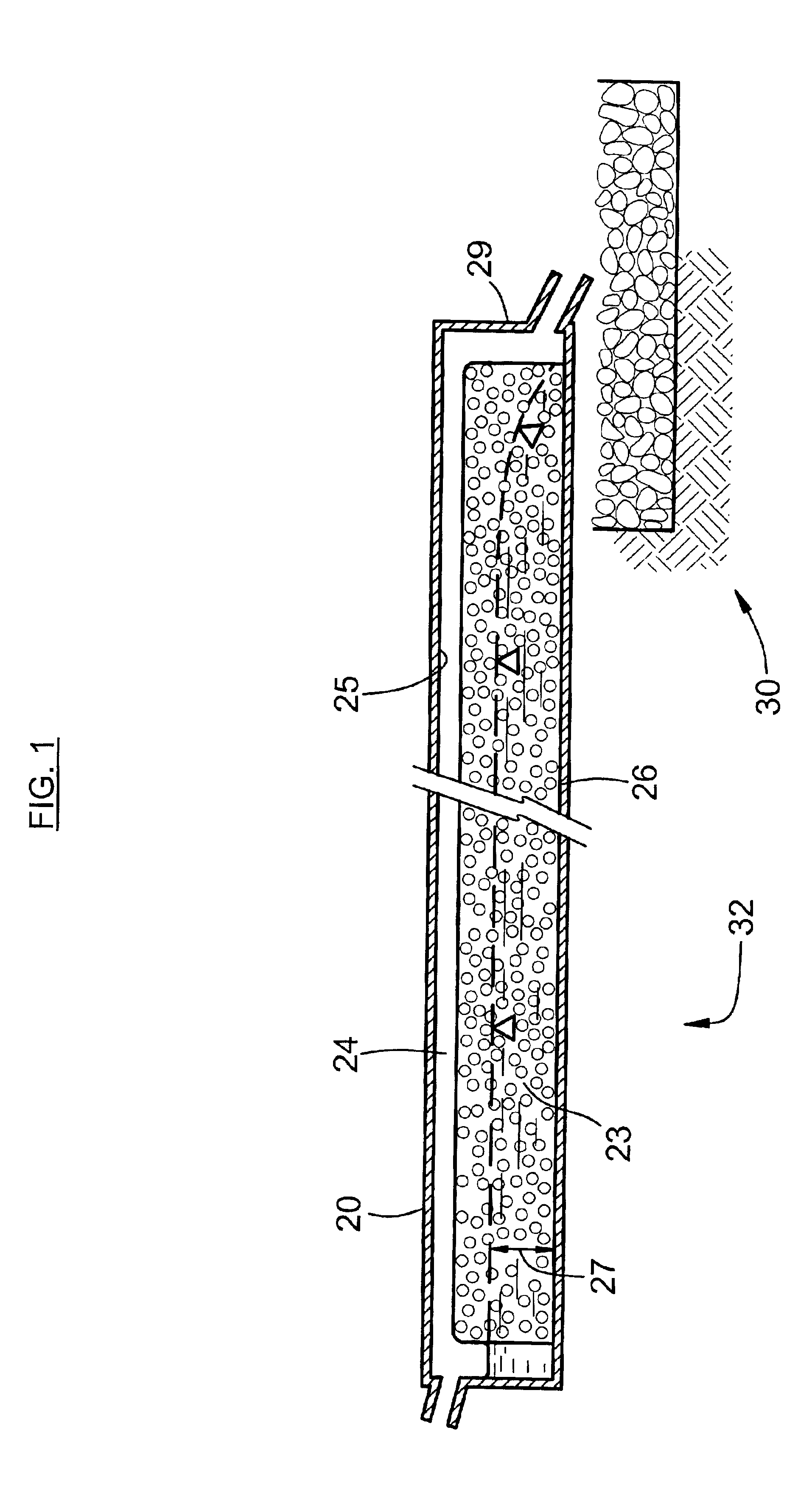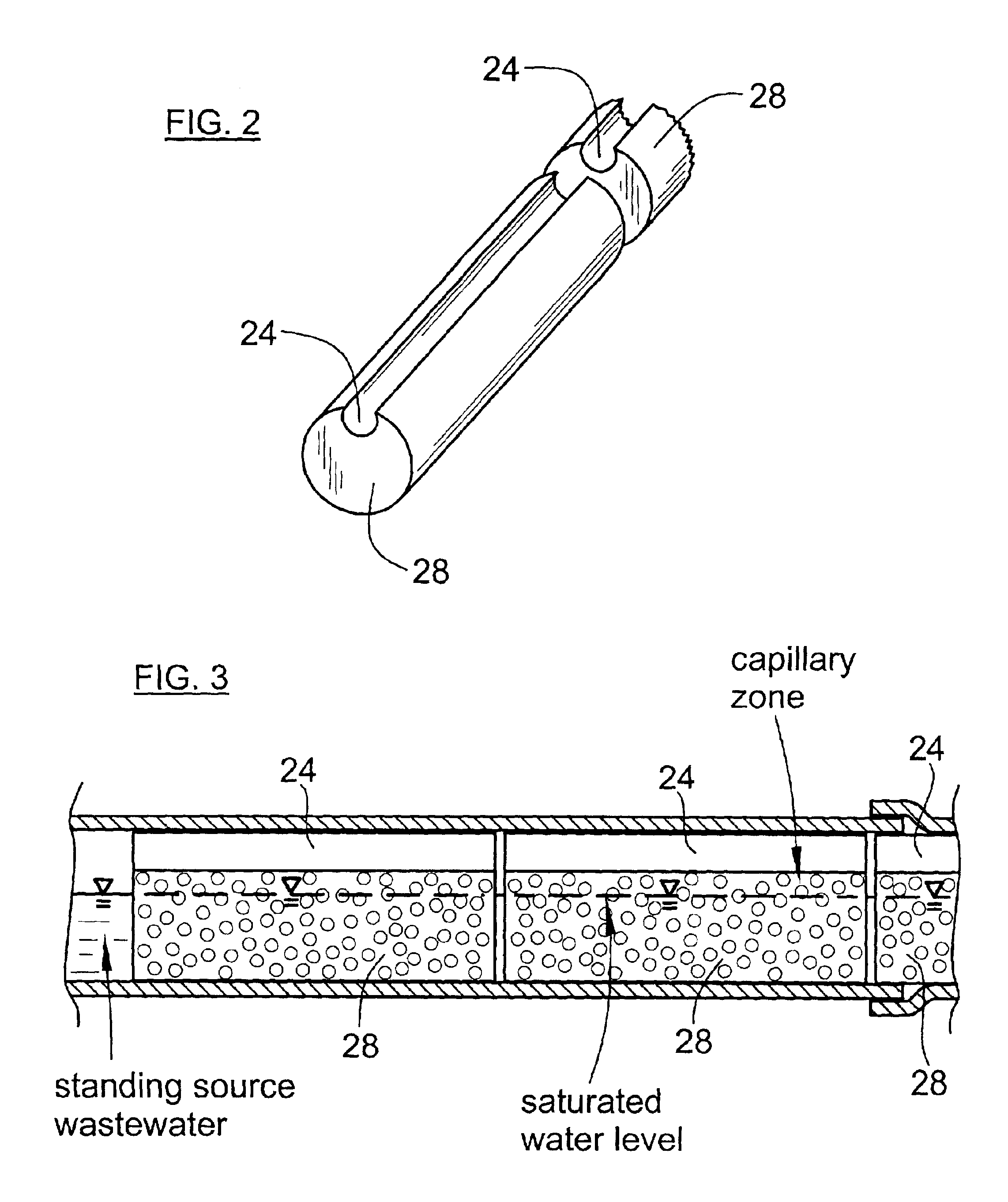In-pipe wastewater treatment system
a wastewater treatment system and in-pipe technology, applied in water cleaning, liquid displacement, separation processes, etc., can solve the problems of deterioration of both materials in sewage, high cost of fibreglass tanks, and easy flotation of plastic tanks
- Summary
- Abstract
- Description
- Claims
- Application Information
AI Technical Summary
Benefits of technology
Problems solved by technology
Method used
Image
Examples
Embodiment Construction
By way of further explanation of the first aspect of the invention, exemplary embodiments of the invention will now be described with reference, to the accompanying drawings, in which:
FIG. 1 is a diagrammatic cross-sectioned side view of a system for treating wastewater that embodies the invention.
FIG. 2 is a pictorial view of a body of foam material, which is a component of the system of FIG. 1.
FIG. 3 is a close-up of a portion of FIG. 1.
FIG. 4 is a plan view of the treatment system of FIG. 1.
FIG. 5a is a diagrammatic cross-sectioned view of a pipe containing a body of treatment material.
FIG. 5b is the same, view as FIG. 5a, but shows a different condition.
FIGS. 6a,6b correspond to FIGS. 5a,5b, but show a different treatment material.
FIG. 7 is an end view of another system for treating wastewater that embodies the invention.
FIG. 8 is a cross-sectioned side-view of the system of FIG. 7.
FIG. 9 is an end view, like FIG. 7 of another system that embodies the invent ion.
FIG. 9a is a cro...
PUM
| Property | Measurement | Unit |
|---|---|---|
| length | aaaaa | aaaaa |
| length | aaaaa | aaaaa |
| lengths | aaaaa | aaaaa |
Abstract
Description
Claims
Application Information
 Login to View More
Login to View More - R&D
- Intellectual Property
- Life Sciences
- Materials
- Tech Scout
- Unparalleled Data Quality
- Higher Quality Content
- 60% Fewer Hallucinations
Browse by: Latest US Patents, China's latest patents, Technical Efficacy Thesaurus, Application Domain, Technology Topic, Popular Technical Reports.
© 2025 PatSnap. All rights reserved.Legal|Privacy policy|Modern Slavery Act Transparency Statement|Sitemap|About US| Contact US: help@patsnap.com



